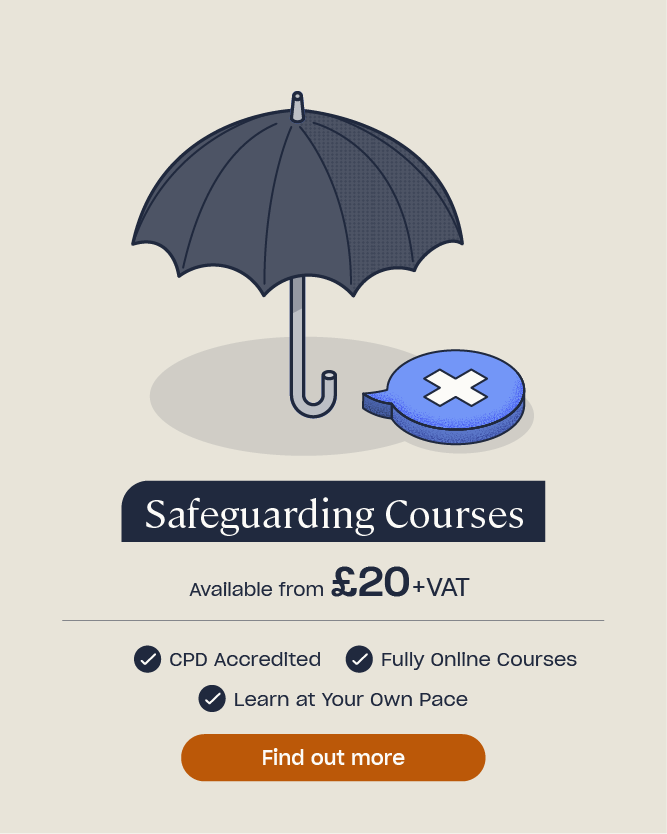What is a Child Centred Approach?
Safeguarding is fundamental to keeping children safe and all those who work with children must be aware of their role and responsibilities. A child centred approach to safeguarding is integral to supporting a child’s welfare. This approach ensures that a child’s views are heard and their opinions respected so that any action taken is in their best interests. In this article we will outline everything you need to know about a child centred approach to safeguarding.
What is a Child Centred Approach?
Simply put, a child centred approach means putting the child at the centre of any decision making about their lives. A child centred approach encourages practitioners to focus on the needs of the child and to work in partnership with them and their families to support a happy and healthy future.
In UK law a child centred approach is supported by the following acts:
The Children Act 1989 
This act requires local authorities to give due consideration to a child’s wishes when determining what services to provide under Section 17 and before making decisions about action to be taken to protect individual children under Section 47. These duties complement requirements relating to the wishes and feelings of children who are, or may be, looked after (Section 22(4)), including those who are provided with accommodation under Section 20 and children taken into police protection (Section 46 (3)(d)).
The Equality Act 2010 
This act puts a responsibility on public authorities to have a regard to the need to eliminate discrimination and promote equality of opportunity. This applies to the process of identification of need and risk faced by the individual child and the process of assessment. No child or group of children must be treated any less favourably than others in being able to access effective services which meet their particular needs. To comply with the Equality Act 2010, safeguarding partners must assess and where appropriate put in place measures ahead of time to support all children and families to access services, overcoming any barriers they may face due to a particular protected characteristic.
The United Nations Convention on the Rights of the Child (UNCRC) 
This is an international agreement that protects the rights of children and provides a child-centred framework for the development of services to children. The UK ratified the UNCRC in 1991 and recognises children’s rights including expression and receiving information.
The Domestic Abuse Act 2021 
This act recognises that a child is a victim of domestic abuse in their own right if they see, hear or experience the effects of domestic abuse, are related to either the victim or perpetrator of the abuse, or the victim or perpetrator has parental responsibility for the child.
The Children’s Social Care National Framework 2023 
This statutory guidance sets out the purpose of children’s social care as existing to support children and families, to protect children by intervening decisively when they are at risk of harm and to provide care for those who need it, so they grow up and thrive with safety, stability and love.
Importance of a Child Centred Approach
A child centred approach is important as it centralises the needs and wishes of children. In safeguarding situations the priority is, rightly so, ensuring the safety of a child. However, in doing so, the wishes and needs of a child can be inadvertently ignored or dismissed because of their age, lack of understanding or proximity to the situation. Children, unlike adults, do not necessarily have the life experience or perspective to make decisions that are in their best interest. Therefore, in these instances those with safeguarding responsibilities must intervene to act in a child’s best interest. However, that does not mean that a child should not have any input on decisions that are made about their life. A child centred approach respects a child’s autonomy, protects their independence and reaffirms the importance of their individual opinions.

The government’s Working Together to Safeguard Children 2023 guidance notes that a child centred approach is fundamental to safeguarding and promoting the welfare of every child. The guidance continues that children have been clear about what they want from an effective safeguarding system. This includes:
- Vigilance: to have adults notice when things are troubling them.
- Understanding and action: to understand what is happening; to be heard and understood; and to have that understanding acted upon.
- Stability: to be able to develop an ongoing stable relationship of trust with those helping them.
- Respect: to be treated with the expectation that they are competent rather than not.
- Information and engagement: to be informed about, and involved in procedures, decisions, concerns and plans.
- Explanation: to be informed of the outcome of assessments, and decisions and reasons when their views are not met with a positive response.
- Support: to be provided with support in their own right as well as a member of their family.
- Advocacy: to be provided with advocacy to assist them in putting forward their views.
- Protection: to be protected against all forms of abuse, exploitation, and discrimination, and the right to special protection and help if a refugee.
A child centred approach to safeguarding should respect these wishes and needs and in so doing, a child’s autonomy. This helps to establish trust and shows a child that their opinions are important and that, where appropriate, they have a say in any decision making about their lives.
Want to Learn More?
All children have the right to safety and those with safeguarding responsibilities must uphold their duty in order to keep them safe. Our wide range of Safeguarding Courses will provide you with the necessary knowledge and skills to maintain your safeguarding responsibilities.
Child Centred Approach to Safeguarding
In order to adopt an effective child centred approach to safeguarding, the needs and wishes of a child must be kept in focus. This can be done by:
Listening to the child – Actively listen to the child about their situation/environment and what they are experiencing. Don’t let assumptions that you may have made from observations or even past experience drive the conversation or any actions that you take. Speak to the child about their daily lives, how they feel and the people in their lives. An important part of safeguarding is establishing trust. As such, do not interrogate the child as this may make them feel pressured to speak up or fearful that there will be ramifications if they are totally honest. Create a calm, judgement free environment in which they can speak freely. Communication is key in safeguarding and listening to a child shows them that you are someone with whom they can communicate openly and honestly.
Providing them with information – Children can often feel that decisions are being made on their behalf for no good reason, especially if they are not provided with the necessary information to understand. It’s not uncommon to think that a child is ‘too young’ to understand the full extent or scope of the safeguarding situation that they are involved in and a desire to protect their youthful innocence can sometimes lead those responsible for looking after them to withhold information. A child has the right to information about their situation. If it would be inappropriate to give them the full details, then find a way to communicate as much as you can honestly, accurately and in an age appropriate manner. This includes information on what has happened, what may happen next, their legal rights and the options available to them.

Discovering their wishes – Once a child has been presented with the necessary information and options as to what happens next, it’s important that their wishes are listened to and, where possible, respected. When talking to a child try to ascertain what they want to change about their situation. This is also a useful means to gauge how the child perceives the abuse or neglect that they may be experiencing and the professional intervention that is therefore needed. Taking the time to figure out what a child wants reaffirms that their wishes are important and that they have a say in their future.
Involving them in decision making – Involving a child in the decision making doesn’t necessarily mean letting a child do whatever they wish as this may not be the safest option. However, it does mean keeping them informed, providing them with options and ensuring they have the necessary information to understand why certain action has or hasn’t been taken.
All children have the right to safety and safeguarding is integral to ensuring this right is protected. A child centred approach to safeguarding focuses on the needs of a child and respects their opinions, views and wishes. It centralises their wellbeing whilst reiterating that they have autonomy over their lives.
Further Resources:
- The Children and Families Act 2014
- Guidance on the Levels of Need in Safeguarding
- Safeguarding Courses











